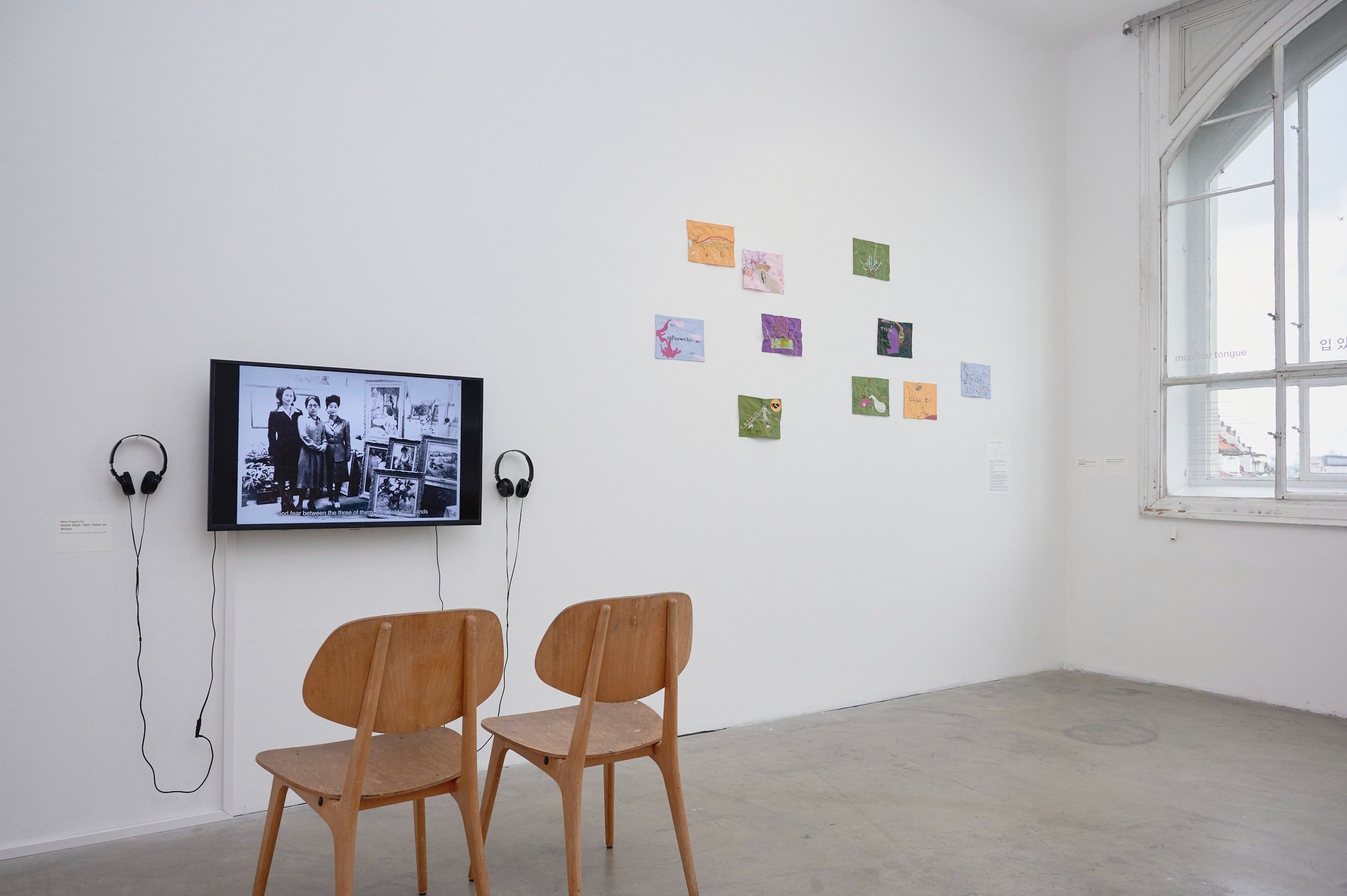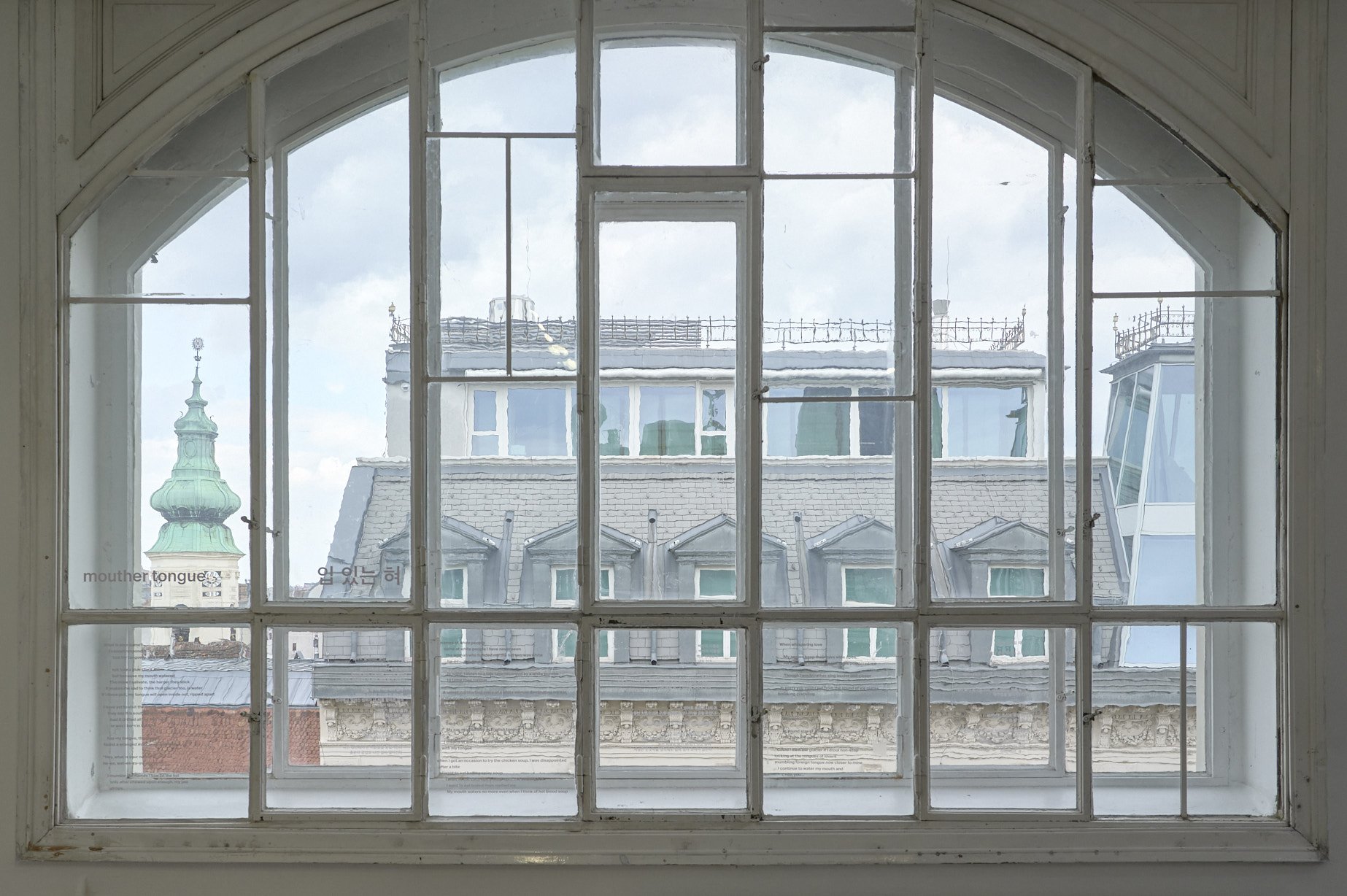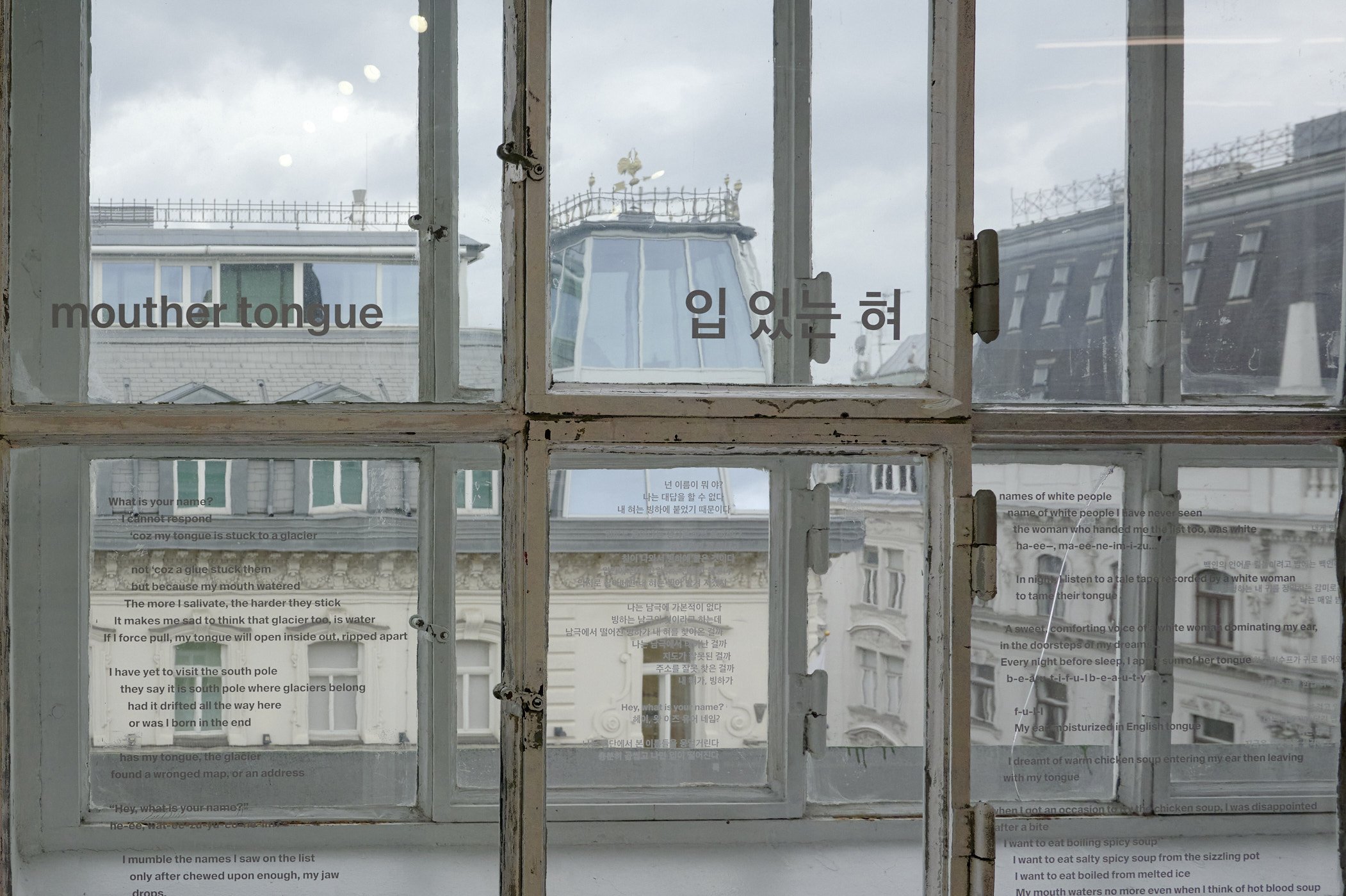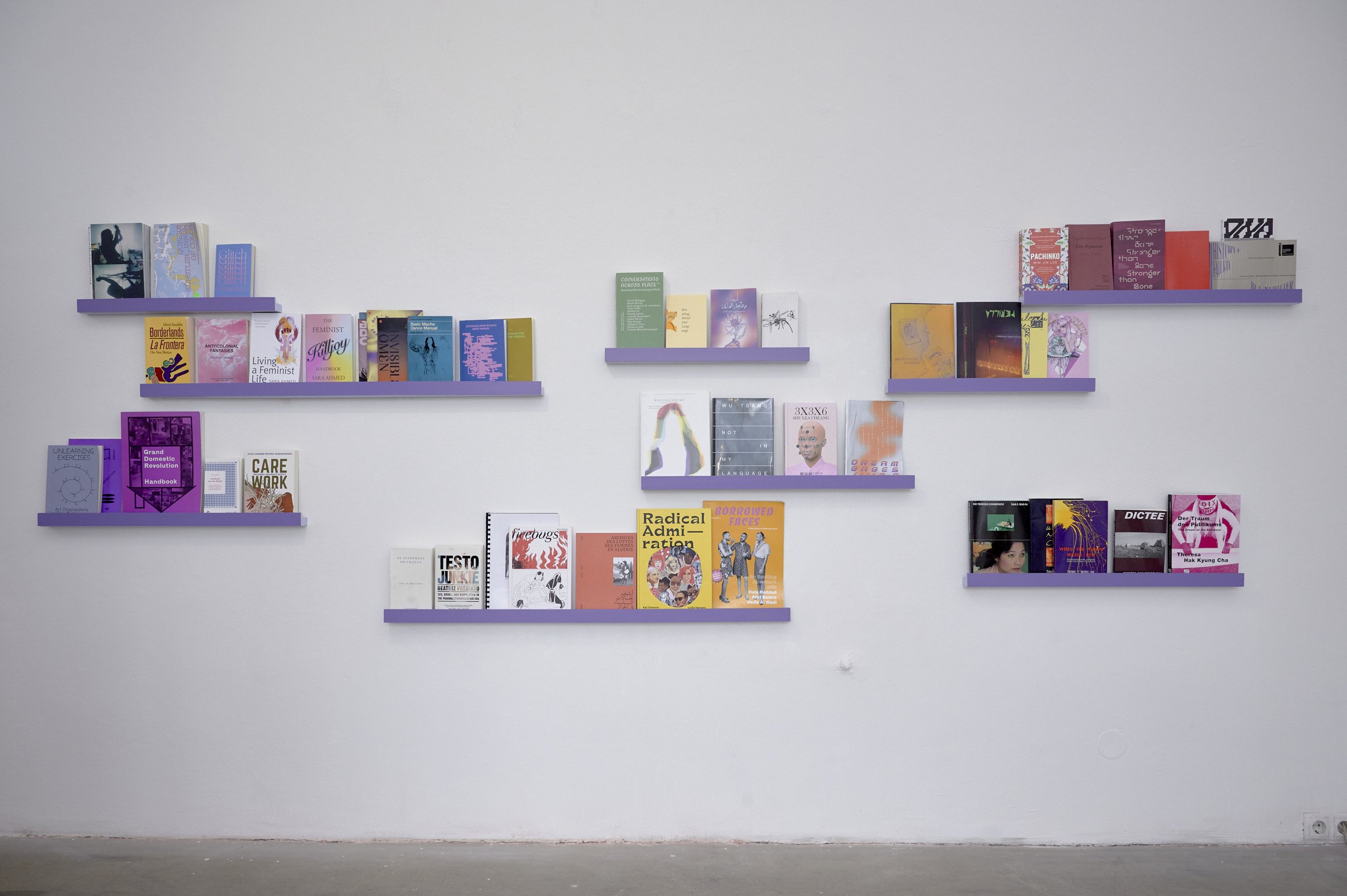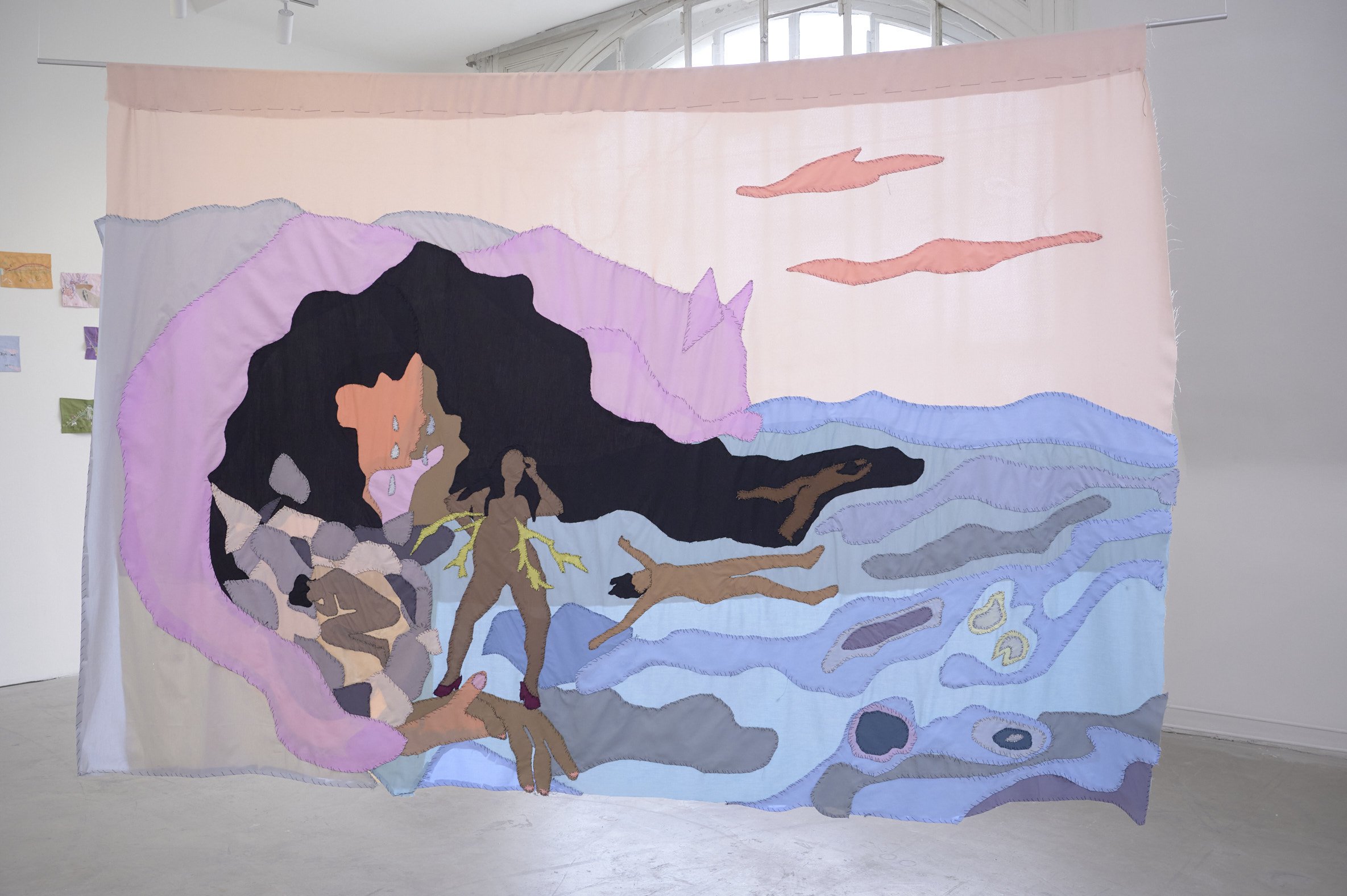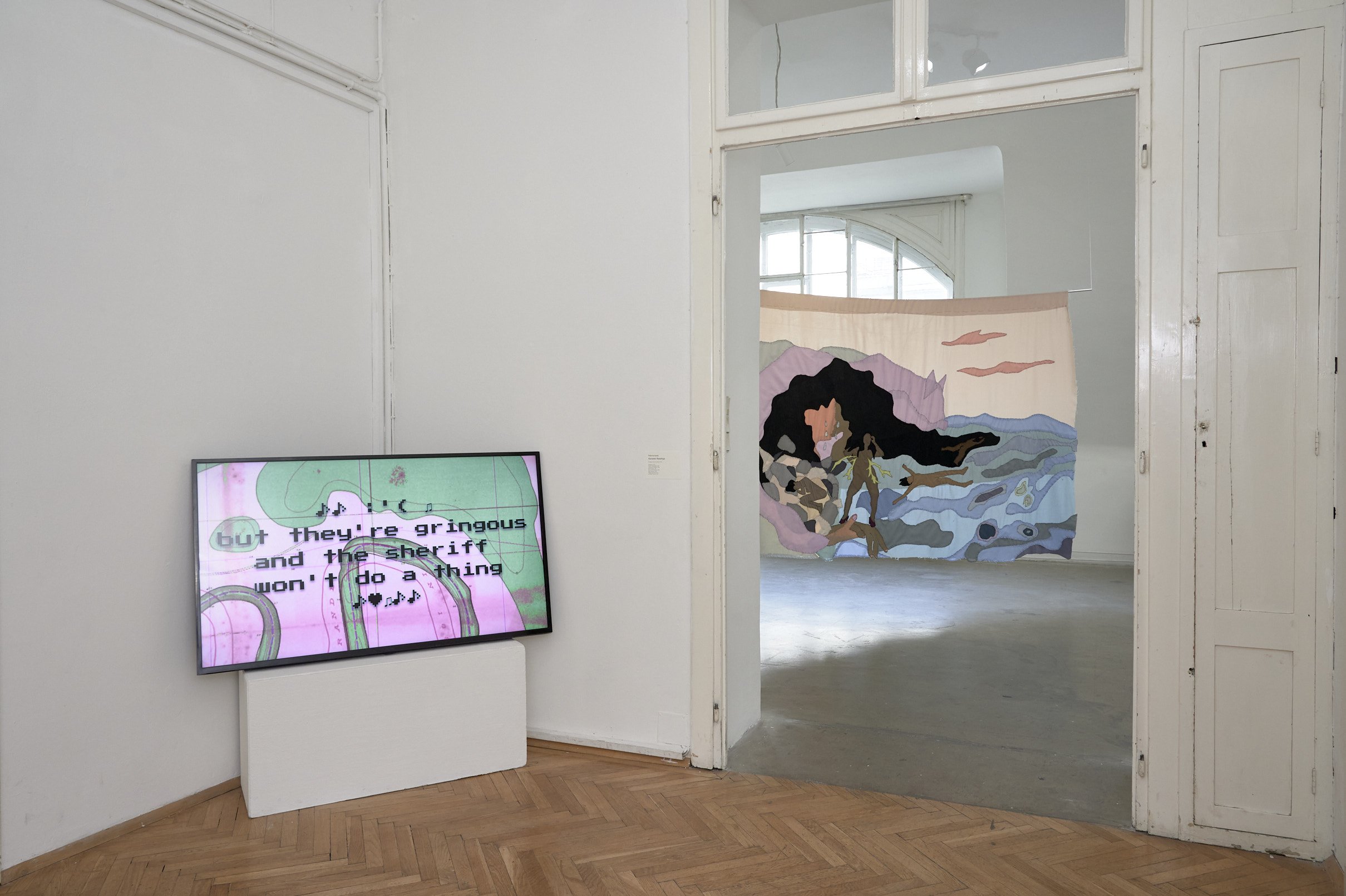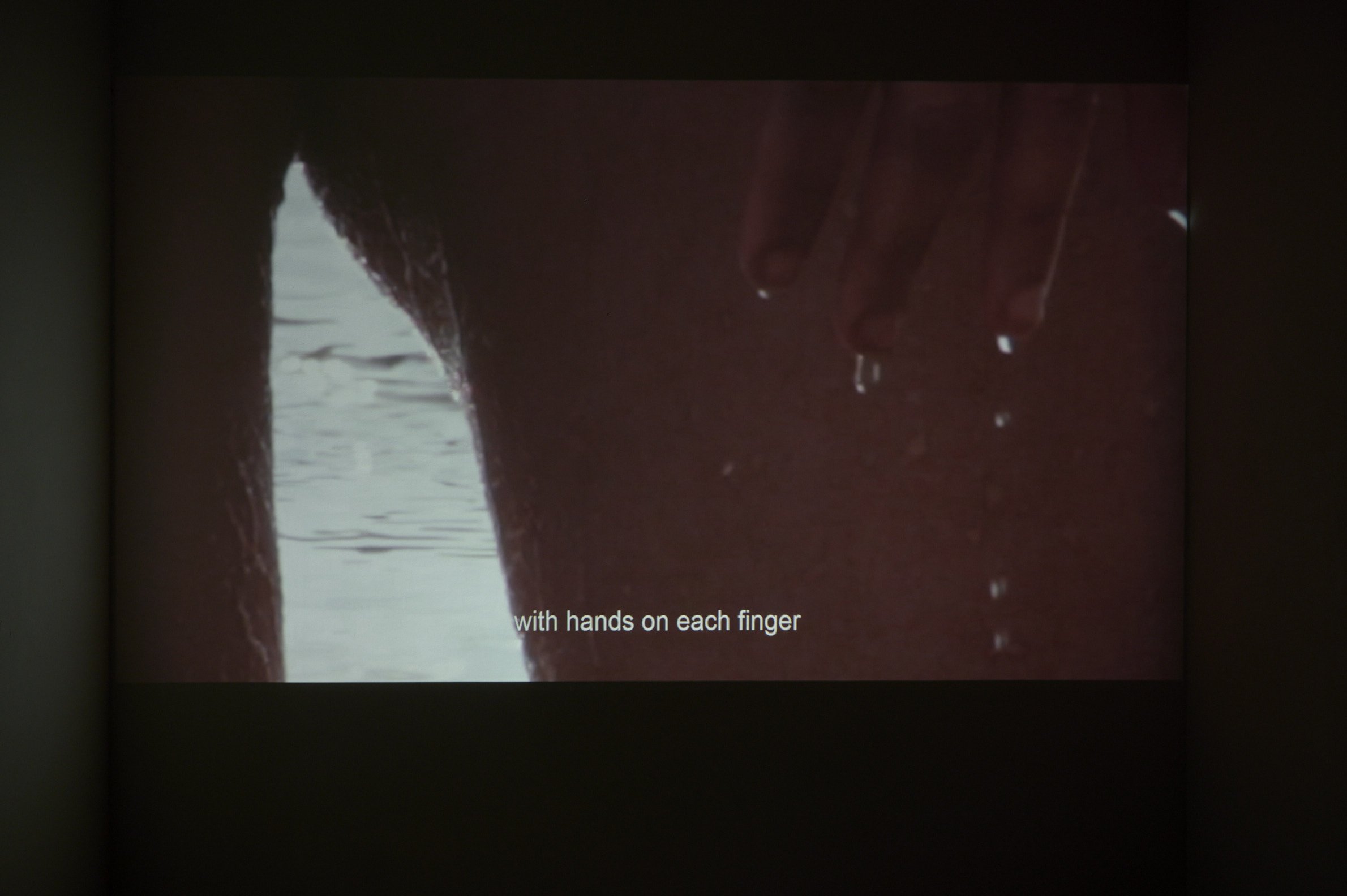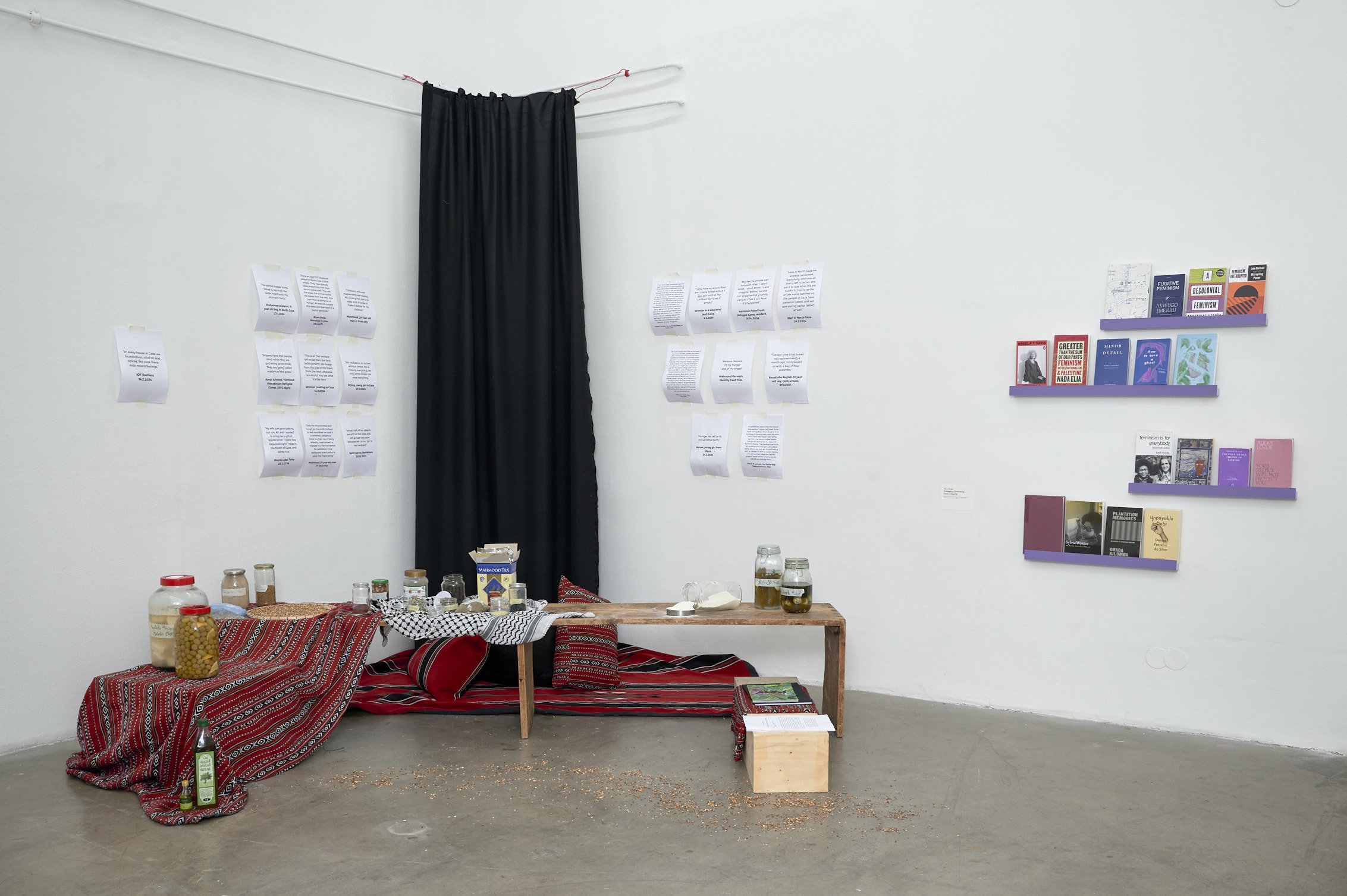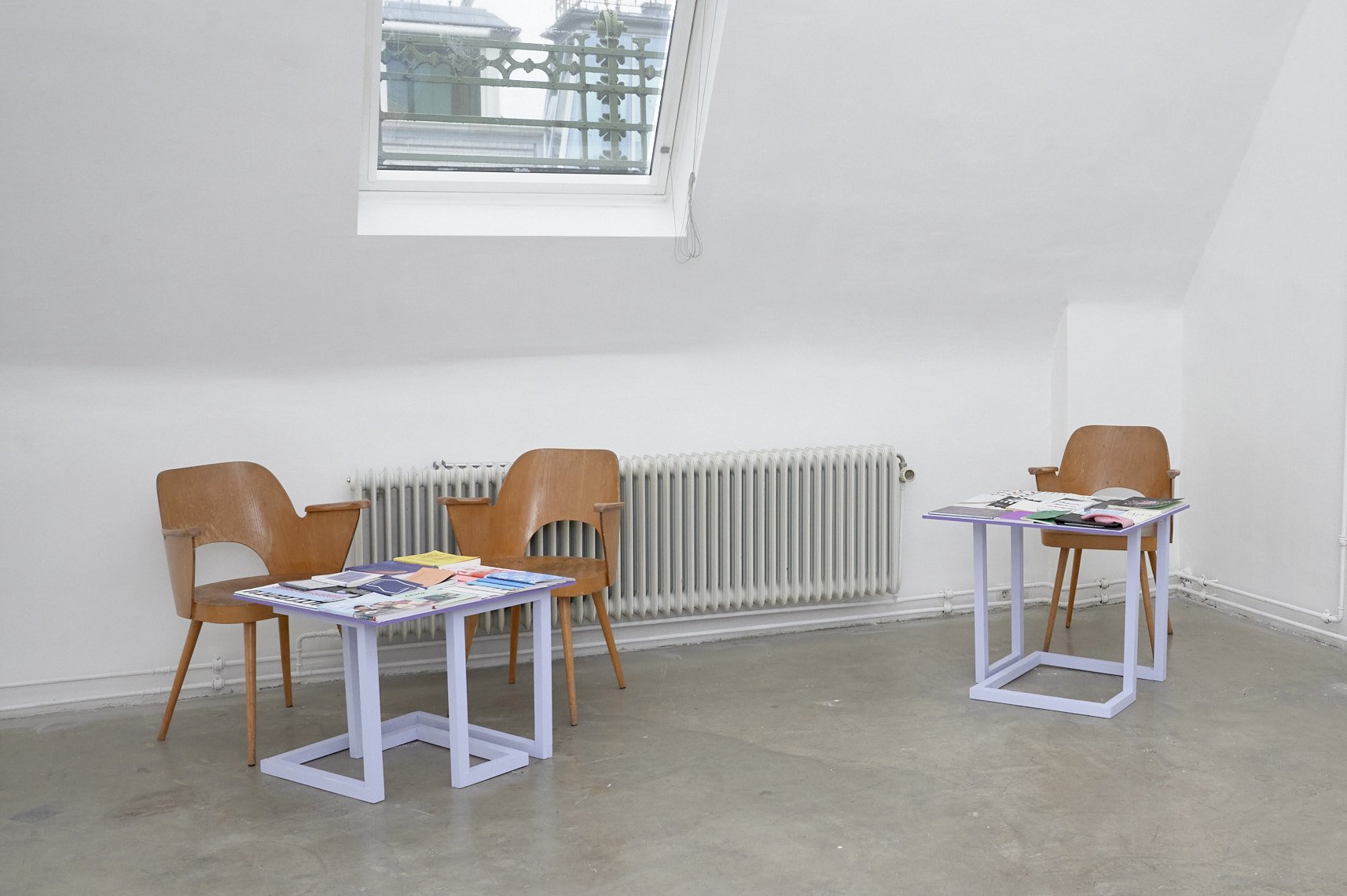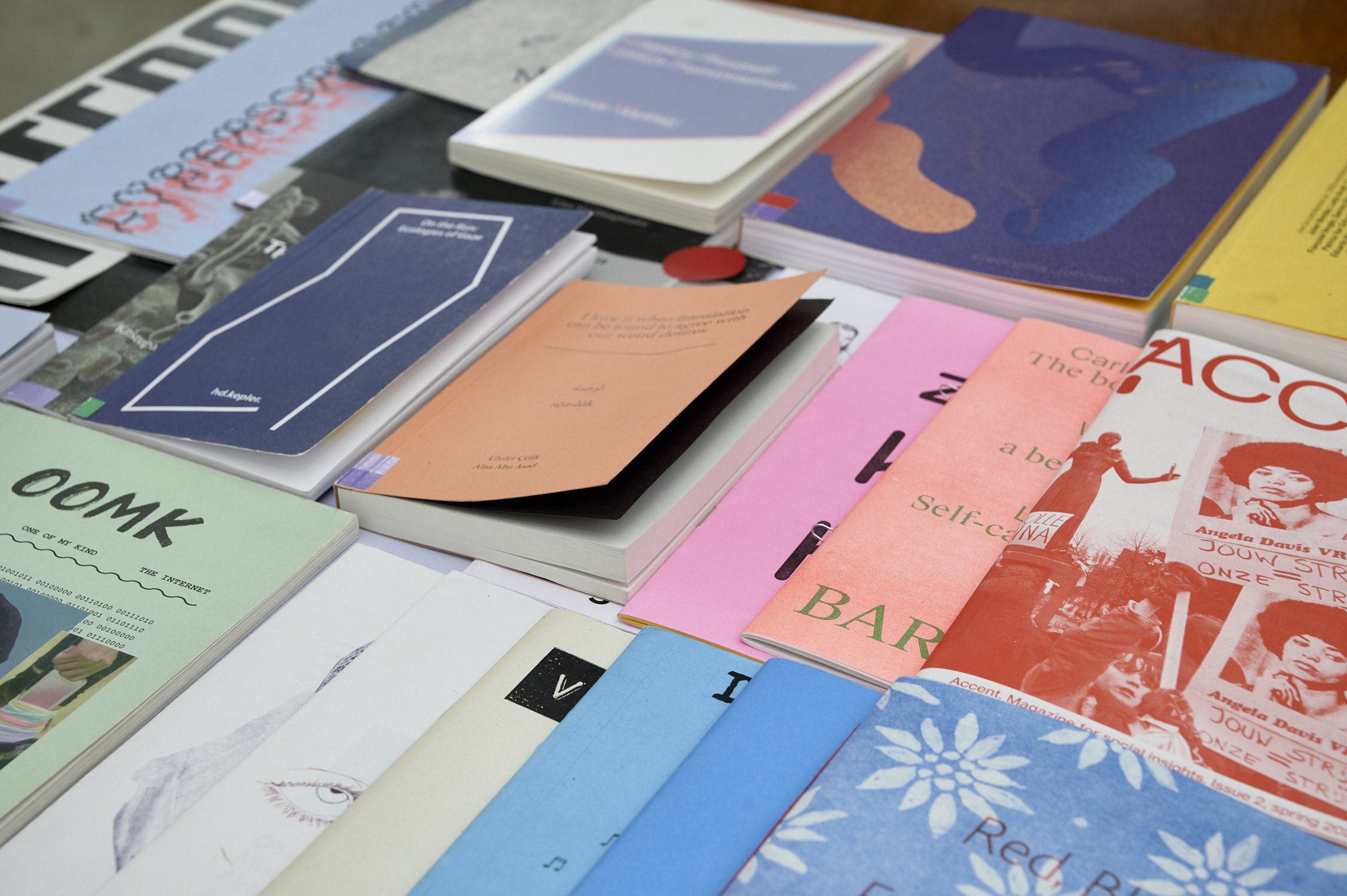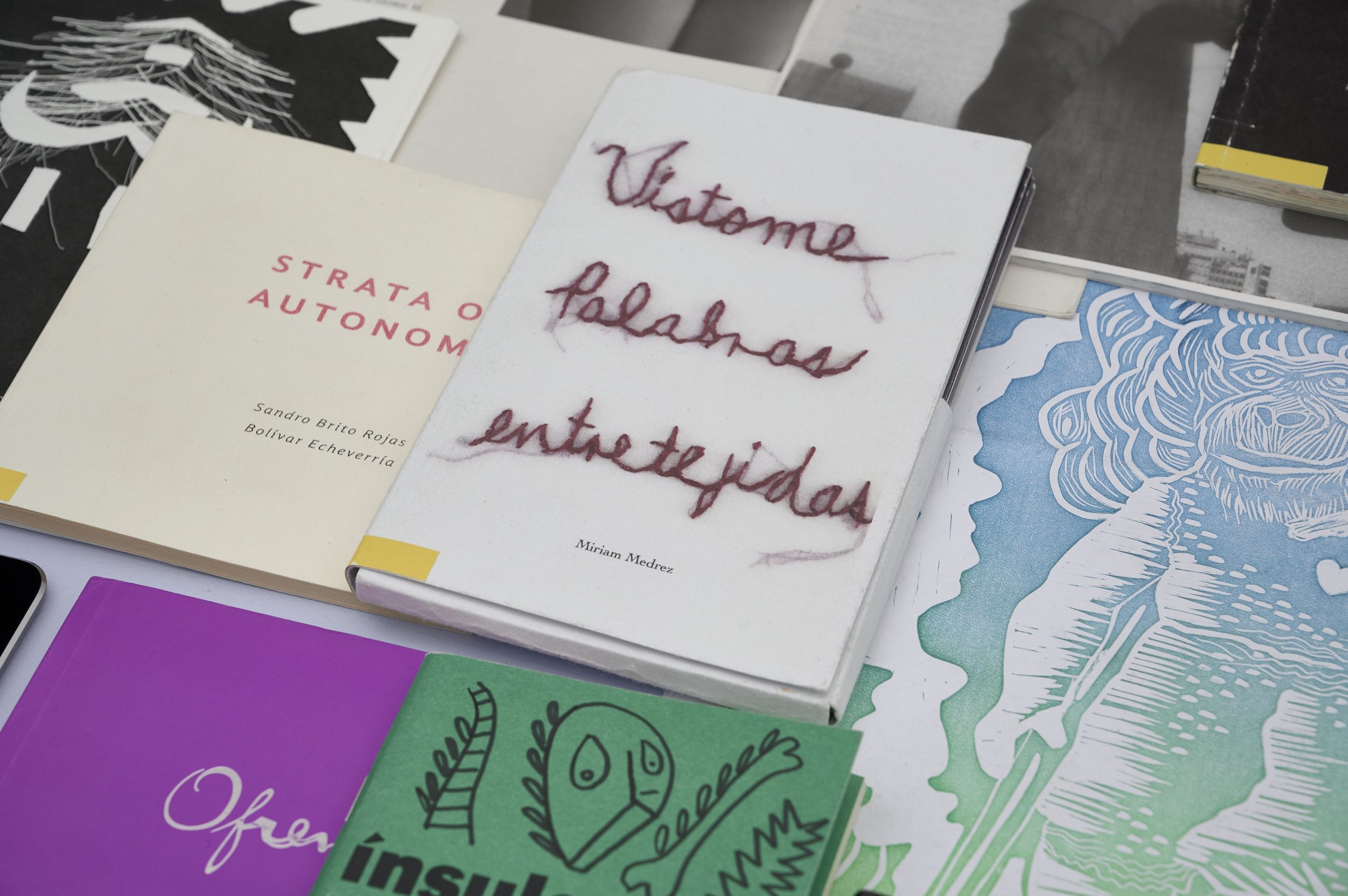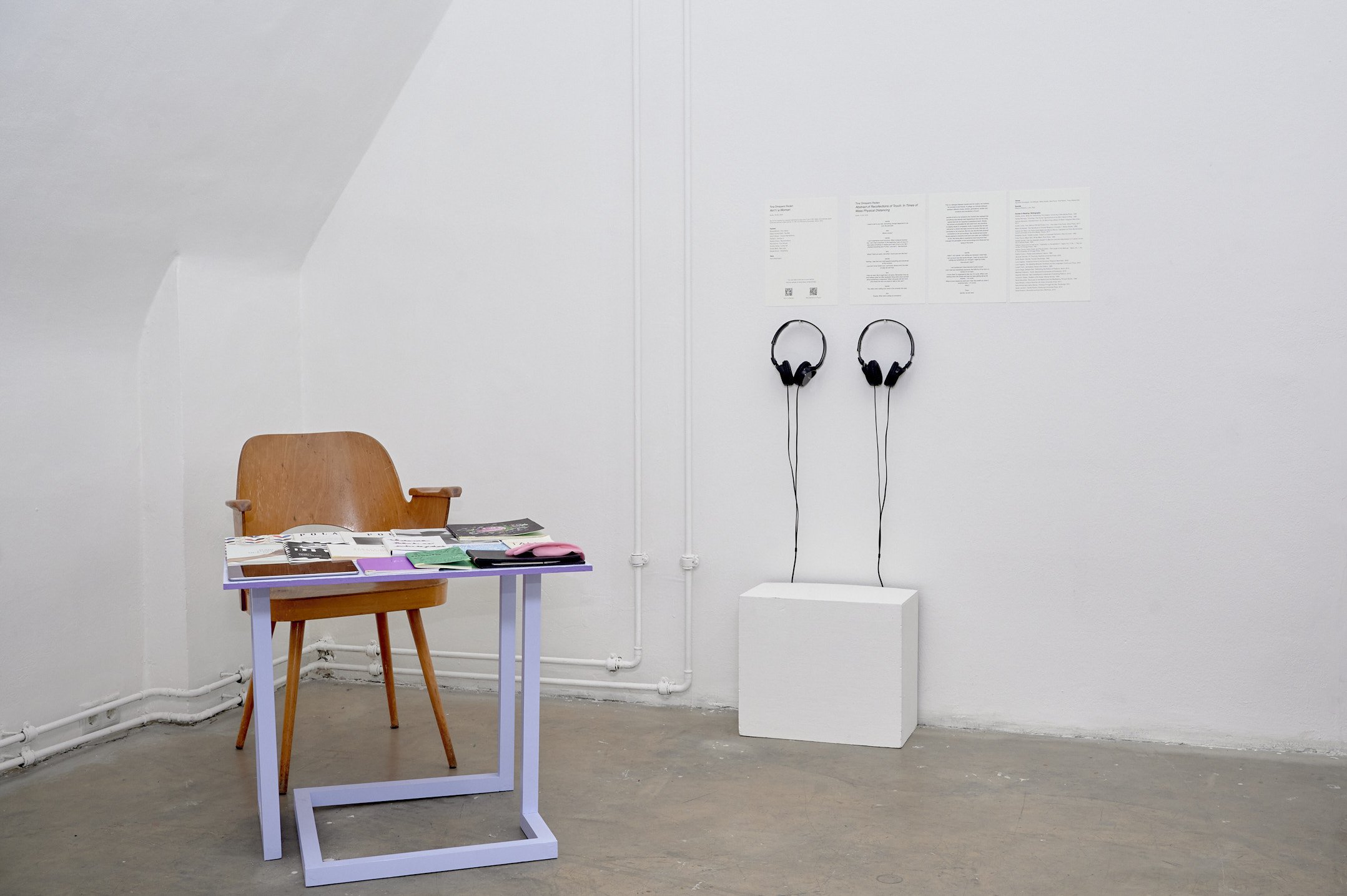living library of becomings
March 2024 – 10 April 2024 / Austrian Association of Wom*n Artists (VBKÖ), Vienna
with Paloma Ayala, Nikita Yingqian Cai, Kyungrim Lim Jang & Hannah Sakai, Tina Omayemi Reden, Salma Shaka, Kanako Tada, Sophie Utikal, VOLUMES Archive, and diverse publishing practices
Curated by Miwa Negoro Exhibition design by Shi Yin
Courtesy of VBKÖ © Photo: Daniel Hill
living library of becomings is a group exhibition derived from a performative library project dedicated to multiple narratives of intersectional, decolonial, queer feminist spirits. It draws inspiration from influential writings, Gloria Anzaldúa’s Borderlands, Theresa Hak Kyung Cha’s DICTEE, and Audre Lorde’s Uses of the Erotic that challenge the binary confines of destructive colonial modernity to transcend geopolitical, linguistic, and spiritual boundaries while nurturing an emancipatory power from within. Weaving together the resonating voices, the exhibition features the works that explore the shape-shifting bodies of water, thoughts, languages, and feelings as the fluid, transformative agency. It embraces the margin, the liminal, and its relation as an assemblage, recognizing the affects of proximity, displacement, and (dis)orientation in the moment of grief, loss, and liberation.
living library of becomings is a portal of encounters, bridging the past, and the present, to the future of intergenerational and transcultural feminist imaginations. Taking a library, as a living archival practice of voices, it transfers and shares the process of (un)becoming through knowing, listening, and touching, as something plural. The visitor is invited to spend their time reading a selection of textual materials from the library, including various artistic zines and collective publishing practices. During the exhibition, the space will be activated by a talk, performative interaction, somatic reading session, and reading performance.
The library includes the selection from VBKÖ Archive, Kunstraum Niederösterreich Library, VOLUMES Archive, and Mai Ling Library.
***
A borderland is a vague and undetermined place created by the emotional residue of an unnatural boundary. It is in a constant state of transition.
– Gloria Anzaldúa
living library of becomings is a group exhibition derived from a performative library project dedicated to multiple narratives of intersectional, decolonial, queer feminist spirits. Started as a digital platform, the library project has been collecting artistic publications, zines, and publishing practices, exploring tactile ways of knowledge transfer––how can feminist spirits, thoughts, writings, and voices be shared while embracing bodily sensations as ways of knowing and sensing the world?
In her book Living a Feminist Life, Sara Ahmed emphasizes the necessity of amplifying marginalized voices in the face of persistent “citation” of Eurocentric heteronormative patriarchal canon as a (re)productive mechanism of knowledge. At the same time, “citation” is a guidance of collective resistance and empowerment to nurture genealogy, as she writes, “[c]itation is feminist memory. Citation is how we acknowledge our debt to those who came before; those who helped us find our way when the way was obscured because we deviated from the paths we were told to follow.”[1] This politics of citation is not only relevant to the academic realm of writing, but it is importantly a survival strategy in everyday life. Guided by Ahmed’s articulation, living library of becomings is a portal of encounters, bridging the past, and the present, to the future of intergenerational and transcultural feminist imaginations. Taking a library, as a living archival practice of diverse voices, it transfers and shares the process of (un)becoming through the acts of knowing, listening, and sensing, as something plural.
A group exhibition at the Austrian Association of Women Artists (VBKÖ) delves into such bodily knowing. It draws inspiration from influential writings Gloria Anzaldúa’s Borderlands/La Frontera: The New Mestiza (1987), Theresa Hak Kyung Cha’s DICTEE (1982), and Audre Lorde’s Uses of the Erotic (1978) that challenge the binary confines of destructive colonial modernity to transcend geopolitical, linguistic, and spiritual boundaries while nurturing an emancipatory power from within.
Self-described as “chicana dyke-feminist,” Gloria Anzaldúa discusses the invisible borders of gender, sexuality, race, ethnicity, and religion through the structurally imposed intersectional struggles and lived experiences of Chicanas in the sociopolitical context of the MX/US border. She envisions a new consciousness as beings in the border life, speaking in tongues, and reconnecting with indigenous knowledge of the lands.
Her autobiographical approach and conscious-raising in gender and colonial entanglements show a parallel in the writing practice of Korean-American artist Theresa Hak Kyung Cha (1951-1982). Using various mediums such as concrete poetry, videos, and performances, Cha explored and embodied the state of in-betweenness and displacement of the exiled, diasporic, and migratory subjects. Despite her short lifetime falling victim to gender violence, Cha left a diverse body of works, addressing marginalization, compartmentalization, and erasure of one’s language and agency, blurring the boundaries of distinct categorizations. DICTEE (1982) is composed of seven stories of female figures, known and unknown, historical and mythical, and articulates the aftermath of colonial wounds caused by the Japanese occupation of the Korean peninsula.
in between the one actualin actual
to the another actual present.
how many present. how many. simultaneous.
alternate.
– Theresa Hak Kyung Cha
While Anzaldúa and Cha both address the multilinguistic “wild” and “untamed”[2] tongues against the colonial hierarchy of orders, they seek to embrace spiritual and shamanistic reconnection with the world, land, place, and entities, within the act of reclaiming and sensing the self. Their perception resonates with Audre Lorde’s understanding of the erotic, as a power within oneself that is rooted in a spiritual plane and unrecognized feelings. The use of erotic is to sense own body and pleasurable satisfaction, unfolding an emancipatory potential.
I speak of [the erotic] as an assertion of the lifeforce of women; of that creative energy empowered, the knowledge and use of which we are now reclaiming in our language, our history, our dancing, our loving, our work, our lives.
– Audre Lorde
Weaving together the resonating voices, the exhibition features the works by seven artistic positions that explore the shape-shifting bodies of water, thoughts, languages, and feelings as the fluid, transformative agency. Their works embrace the margin, the liminal, and its relation as an assemblage, recognizing the affects of proximity, displacement, and (dis)orientation in the moment of grief, loss, and liberation. Many of the works in the exhibition refer to various feminist writings as anchors that overlap and cross each other, one after another.
Quotes by:
Gloria Anzaldúa, Borderlands/La Frontera: The New Mestiza, 1987.
Theresa Hak Kyung Cha, Exilée, 1980.
Audre Lorde, Uses of the Erotic: The Erotic as Power, 1978.
[1] Sara Ahmed, Living a Feminist Life, Durham and London: Duke University Press, 2017, 15-16.
[2] Gloria Anzaldúa, “How To Tame a Wild Tongue,” Borderlands/La Frontera: The New Mestiza, aunt lute books, 1987, 53-64.
***
